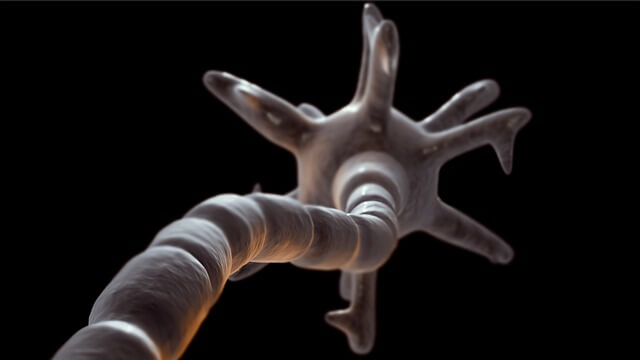Every year, over 5,000 individuals are diagnosed with ALS (amyotrophic lateral sclerosis), a fatal neurodegenerative disease that progressively impairs speech, movement, eating, and breathing by attacking nerve cells in the brain and spinal cord.
Currently, only a few drugs exist to moderately slow down the disease’s progression, with no cure available. However, researchers at CU Boulder have made a surprising discovery regarding a potential player in ALS—a protein resembling an ancient virus. This protein, known as PEG10, is primarily recognized for its role in facilitating placental development.
The findings, published in the journal eLife, suggest that elevated levels of PEG10 in nerve tissue can lead to changes in cell behavior that contribute to the development of ALS. Senior author Alexandra Whiteley, an assistant professor in the Department of Biochemistry, explains the research and its implications.
Supported by funding from the ALS Association, the National Institutes of Health, and Venture Partners, Whiteley’s team is now focusing on understanding the molecular pathways involved in ALS and exploring ways to inhibit the harmful effects of the PEG10 protein.
While the research is still in its early stages, the hope is that these findings could pave the way for a new class of therapeutics targeting the root cause of ALS.
Scientists have discovered that approximately half of the human genome consists of remnants of DNA left behind by viruses, including retroviruses and similar virus-like parasites called transposons. These viruses infected our primate ancestors millions of years ago, with some evolving to become harmless over time but continuing to shape human evolution and health.
PEG10, referred to as a “domesticated retrotransposon,” played a crucial role in the development of mammalian placentas, a significant step in human evolution. However, studies suggest that when excessively present in the wrong locations, this protein can contribute to various diseases, including certain cancers and a rare neurological disorder known as Angelman’s syndrome.
Whiteley’s research is the first to establish a link between the virus-like PEG10 protein and ALS. The protein was found in high levels within the spinal cord tissue of ALS patients, where it appears to interfere with the communication between brain and nerve cells.
PEG10 accumulation has become a distinguishing feature of ALS, leading Whiteley to secure a patent for PEG10 as a biomarker for diagnosing the disease.
Initially, Whiteley’s research focused on studying how cells eliminate excess protein, as an accumulation of protein has been implicated in other neurodegenerative disorders such as Alzheimer’s and Parkinson’s. Her lab specializes in the study of a group of genes called ubiquilins, responsible for preventing the build-up of problematic proteins within cells.
In 2011, a study identified a mutation in the ubiquilin-2 gene (UBQLN2) as a factor in some cases of familial ALS, which constitutes around 10% of all ALS cases. However, the mechanisms through which the faulty gene contributes to the disease have remained unclear.
Using laboratory techniques and animal models, Whiteley and her colleagues identified PEG10 as one of the proteins that accumulate when the UBQLN2 gene malfunctions. Further examination of spinal tissue from deceased ALS patients confirmed the overexpression of PEG10 among thousands of possible proteins.
Additional experiments revealed that the disrupted function of ubiquilins leads to the accumulation of PEG10, which in turn disrupts the development of axons—fibers responsible for transmitting electrical signals from the brain to the body.
The study found that PEG10 was overexpressed in both sporadic and familial ALS cases, indicating its potential role in driving the disease. These findings offer new hope for targeting ALS, a devastating disease with limited treatment options that only marginally extend life expectancy.
Moreover, this research provides valuable insights into
other protein accumulation-related disorders and enhances our understanding of how ancient viruses influence human health. In the case of ALS, the “domesticated” PEG10 protein, once beneficial for placental development, may now be exacerbating neural tissue damage.
The study’s results will be published in the Journal of Peace Research’s July issue.


